unshackled from my screens by the portability of the writing tools …
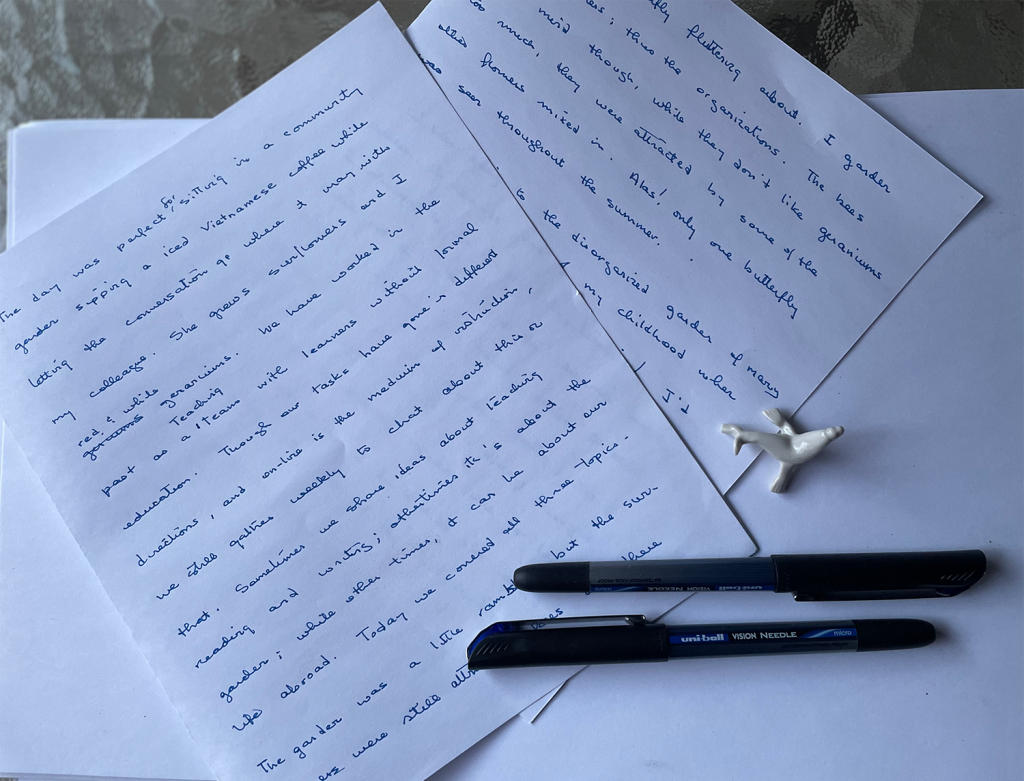
Task requirements: paper, pen and a hard surface
Introspection
Writing is part of my daily work, even though all published work communication is digitalized—as assignments, assessments, emails, corrections, and reports are planned, drafted and revised. Thus, all my manual texts are undistributed.
Typically, most of my manual texts arise from the three hours of virtual face-to-face instruction. Pertinent information such as questions, thoughts, and verbal assessments arising from the encounter is jotted into a bound compartmentalized book in the manner of a repository. The codex format affords the flexibility of jumping around the pages; it is easy to find one’s way back to a spot, especially with the built-in taglike features originating back to the ‘sittybos,’ which the ancient Greek scholars attached to the parchment scrolls (Lamb & McCormick, 2020). However, being fluent in both modalities: writing-by-hand and typing on the Qwerty keyboard, the task could be as easily achieved by either method while still staying engaged with the unfolding class on the screen.
Using pen and paper is not due to lack of equipment, as I could easily record on a tablet synced to the desktop. The drawback to jotting down notes by keyboarding is that the standard of programs such as Microsoft Word, Google Docs, and Apple Pages are linear, a line-by-line presentation of data, inserting text boxes, smart art objects and charts require fiddling. Adobe is a dream for nonlinear representation, yet it requires effort, attention and formatting. On the other hand, execution by pen and paper provides infinitive configurations to map information, reduces cognitive demand allowing the eyes to move from the script, and affords parallel processing (Alves, Castro & Olive, 2005). Furthermore, the slower motor execution allows thinking about the ideas being recorded; thereby, requiring only a rare visit to retrieve what has been noted within the written script.
So to complete the manual text assignment, my mind went first to the writing instrument. This crucial tool in writing has changed dramatically through advancements in technology since the Egyptian reed dip pens used in the 4th century BC. A modern good quality pen’s ease of control affords crisp lines and improved execution, increasing readability. Thinking about penmanship arose from years of being mindful of the need for easy visualization of the graphic marks used in the English code for the students with limited experience with literacy and the students coming from syllabaries or a right-to-left abrade writing system (Schmandt-Bessard, 2009). Precision was essential; otherwise, it was difficult for these students to distinguish the minute marks differencing the letters. Ironically, by using a substitute pen, I found that I was less attentive to the execution of the written text.
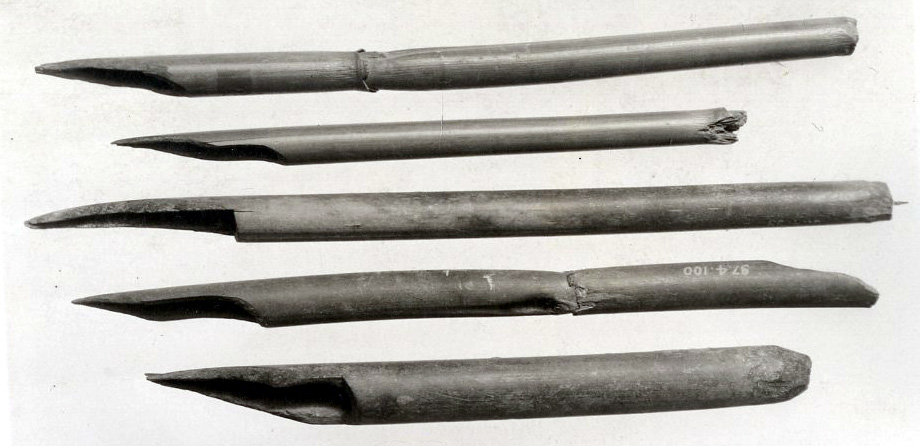
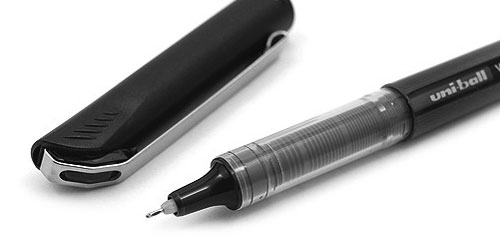
Revolution in technology producing the cap, ink, and nib moves the pen from the 4th century BC Egyptian reed dip pen to 21st AD pen with ease of control, portability, and effortlessness of use.
Decades have passed since I purchased a few handmade sheets of linen paper from the Richard de Bas paper mill in France, in operation since the 15th century. Their paper-making techniques resemble those first used in China 105 CE: putting the fibre into the water until it becomes a pulp, squeezing, pressing, and drying (Cooke, 2012). From start to finish, those cherished unpenned sheets took almost a month to fabricate. As a result, the company only produces 2 tons per year (Great Big Story, 2019).
However, Richard de Bas’s paper mill does use an old form of mass production. It requires more deliberation than modern-day technology that produces 1,000 tons/day (Great Big Story, 2019). Nevertheless, this needed care makes the paper a delight to touch and see (Cooke, 2012).
The advances in post-industrial technology afford universal access to paper, writing, and books; it is hard to dispute that these once cherished paper sheets have become standardized, inexpensive, and devalued.
Even though I am not too fond of the 1,0000 tons/day industrial grade of 20 lb. paper (Great Big Story, 2019), I have far too many reams gifted years back by a now-defunct local newspaper. So now, they are part of my daily routine suitable for scratching out drafts of penned ideas, jotting down thoughts that require further attention, outlining a thought progression, or simply doodling. In addition, its low sheet cost makes it suitable as a temporary storage space for information, which no longer needs care that errors are erased, whited out, or rubbed out but tossed in the recycle bin or a shredder if sensitive.
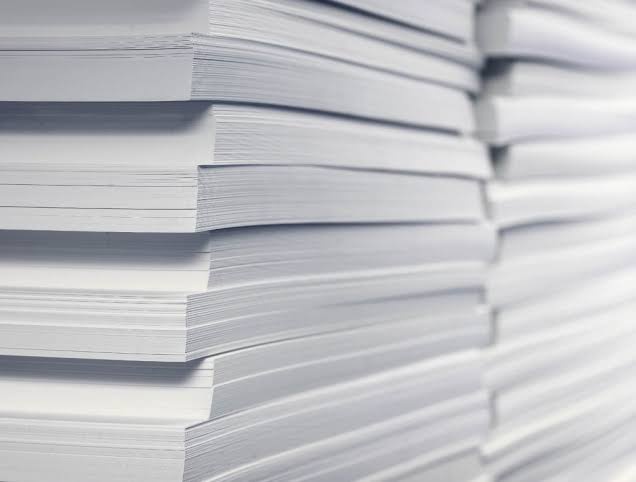
Instead of using quality paper, two standard sheets of 20 lb. legal paper folded inward like a modern-day version of a diptych (Lamb & McCormick, 2020) were employed for this project.
The pen, the choice of paper, and the expectation that the manual text would be mute since scripted texts require extra mental effort on the reader’s part to decipher. Thus, the manual text felt like a form of private communication. Thereby, the hand flowed slightly too quickly; errors crossed and changes inserted above. However, on the slim chance of it being read, I took more time to produce the script for another as I employed visual symbols that have shared meaning for English speakers being drawn from the Latin alphabet, unlike my typical shorthand that is part graphics and vowelless (Schmandt-Besserat, 2009)
“Communication with writing is impossible if the recipient of a written message does not know the meaning of the written symbols.”
– Schmandt-Besserat
Artifacts
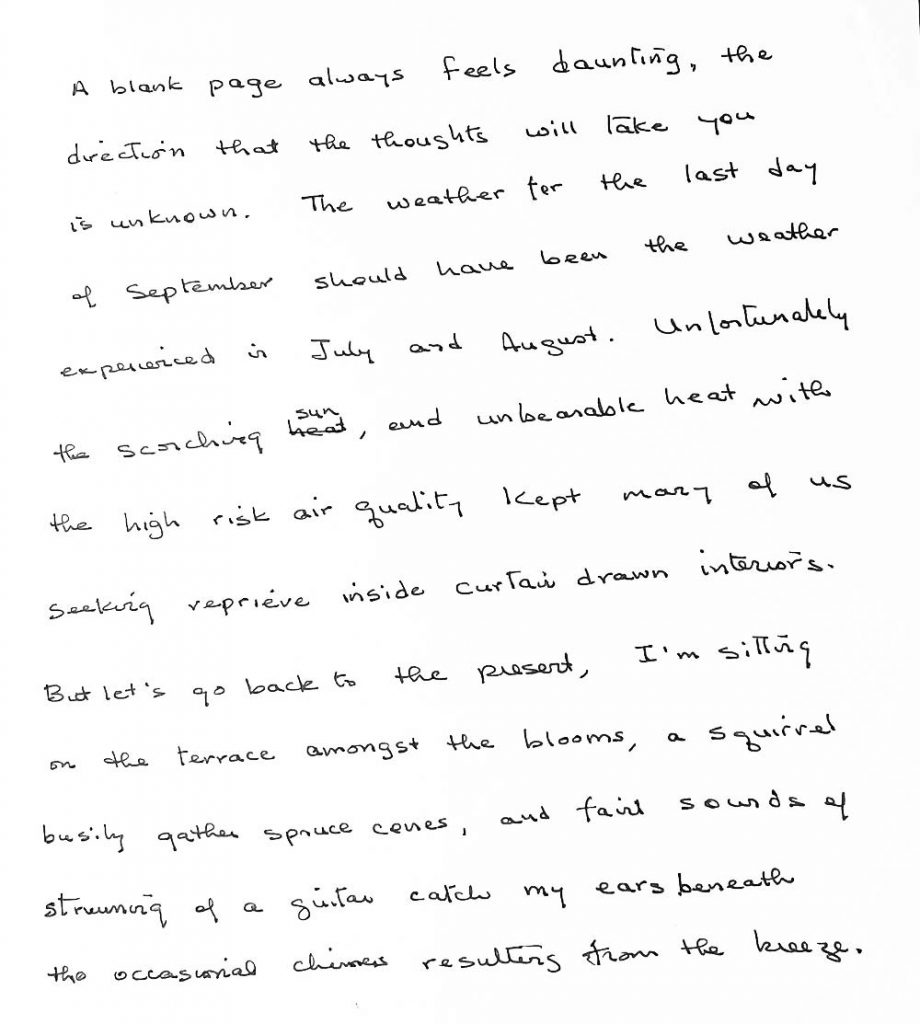
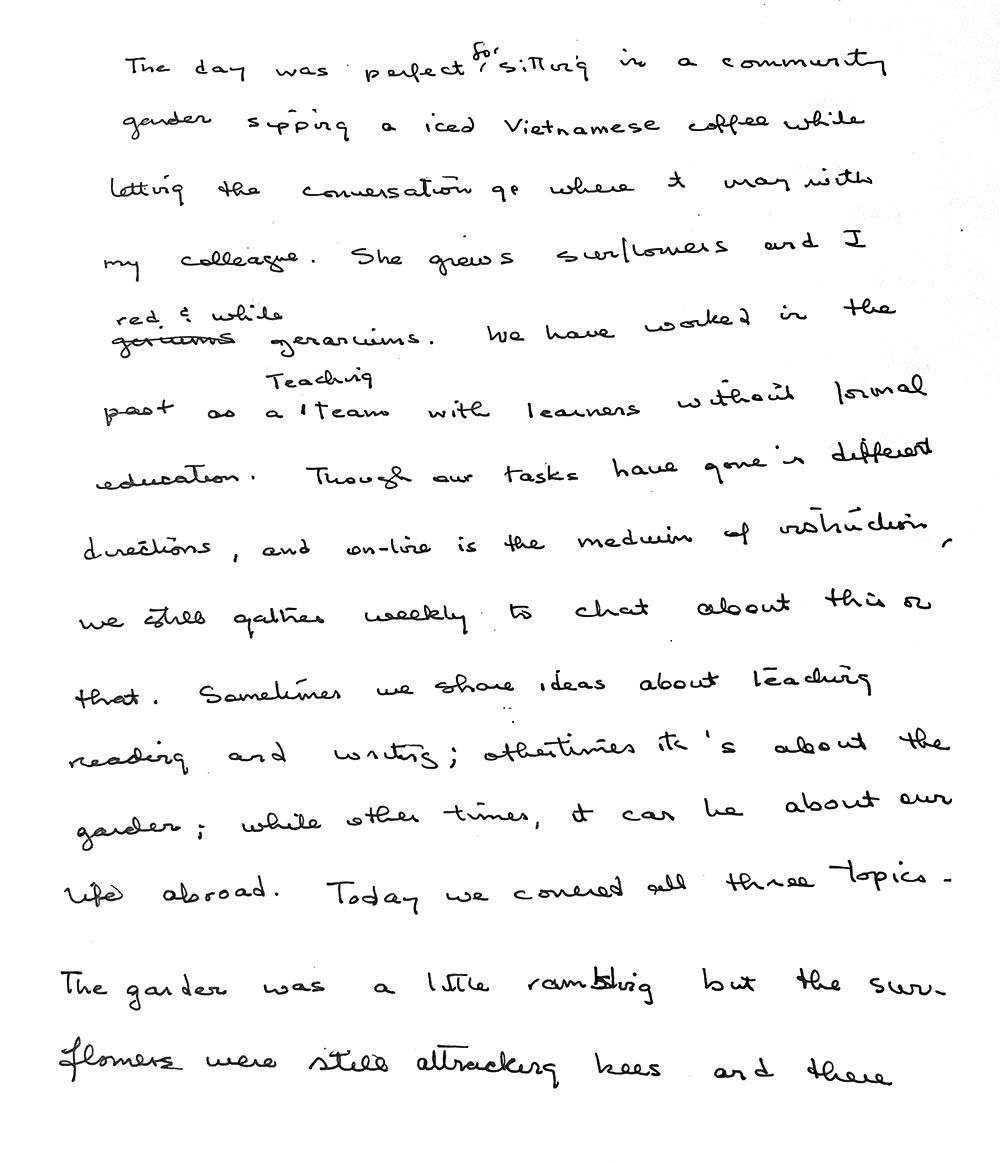
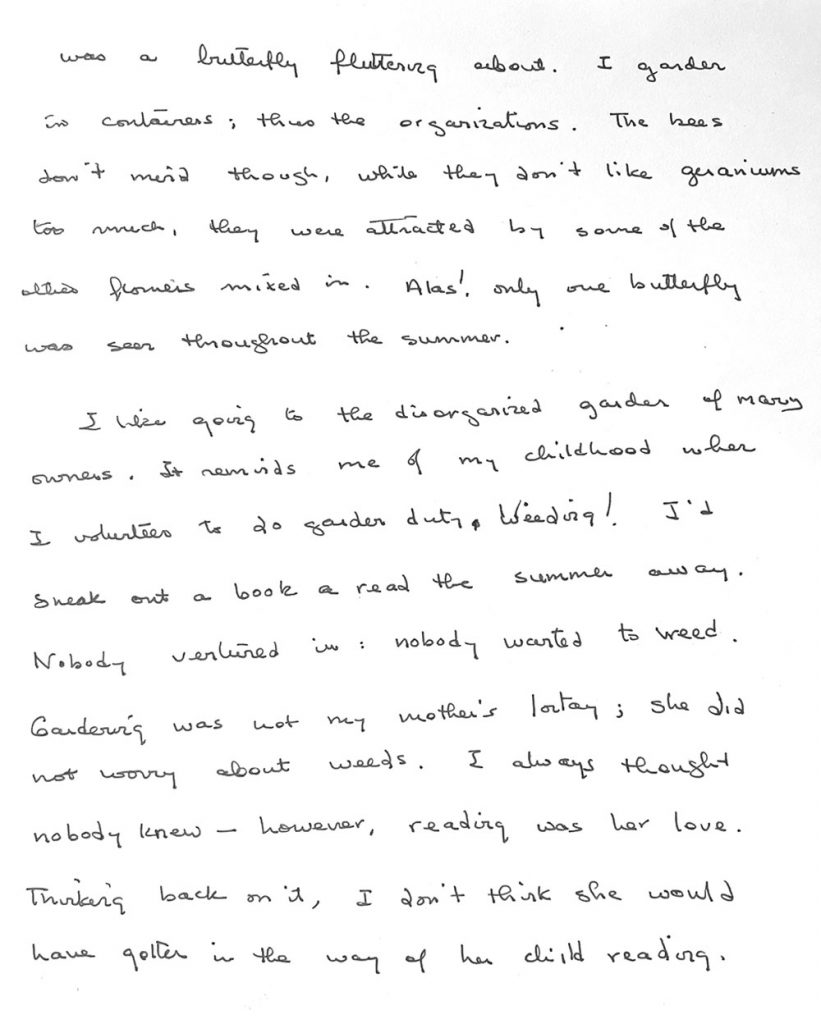
Artifact: Second Draft

Concluding Thoughts
This manual text was easy to create, perhaps resulting from the feel that it collected and did not transfer information. Contrarily, writing for publication is a demanding activity for me. It is more than just generating ideas, converting them into language, and translating them into a written text. The actualization requires revising, editing, proofing several times, facilitated through different word processing programs using artificial intelligence.
The evolution from manual to digital text allows communication to move beyond a mere linear representation. The presentation allows the text to come to life through creative configuration and structures. Similarly, as McLuhan (1964) argued, the medium of communication is part of the message. The capabilities found within the digital technology enable other senses to come into play, creating a different engagement and understanding of the content. Like the Bayeaux Tapestry, today’s writers can overlay the text with colour and images to make meaning. Now, motion, music, translators, text-to-word, and avatars are slipping in to help the populace assess the memories and dreams of humanity.
References
Alves, R. A., Castro, S. L., & Olive, T. (2008). Execution and pauses in writing narratives: Processing time, cognitive effort and typing skill. International Journal of Psychology, 43(6), 969–979. https://doi.org/10.1080/00207590701398951
Cooke, D. (2012, January 26). Upside Down, Left to Right: A Letterpress Film. https://youtu.be/n6RqWe1bFpM
Great Big Story. (2019, October 10). The French Paper Mill That Sold to Dali and Picasso. https://youtu.be/hfko5y9DLYc
Lamb, R., & McCormick, J. (n.d.). From the Vault: Invention of the book, Part 1. https://www.iheart.com/podcast/stuff-to-blow-your-mind-21123915/episode/from-the-vault-invention-of-the-82316952/?keyid%5B0%5D=Stuff%20To%20Blow%20Your%20Mind&keyid%5B1%5D=From%20the%20Vault%3A%20Invention%20of%20the%20Book%2C%20Part%201&sc=podcast_widget
Schmandt-Besserat, D. (2009). “Origins and Forms of Writing.” In Bazerman, C. (Ed.). Handbook of research on writing: History, society, school, individual, text.Links to an external site. New York, NY: Routledge.
Pen (August 30, 2021) In Wikipedia. https://en.wikipedia.org/wiki/Pen.
The Medium is the Message (September 1, 2021) In Wikipedia. https://en.wikipedia.org/wiki/The_medium_is_the_message
